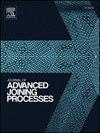Prediction of shrink lines in powder bed fusion of metals using a laser beam by means of a finite element simulation approach
IF 4
Q2 MATERIALS SCIENCE, MULTIDISCIPLINARY
引用次数: 0
Abstract
Powder bed fusion of metals using a laser beam (PBF-LB/M) enables the near-net-shape fabrication of thin-walled parts with a high geometric complexity, thus often featuring structural transitions. Due to high temperature gradients during manufacturing, these structural transitions are subject to localized deformations, which manifest themselves in a shrink line, which is reducing the part lifetime and the dimensional accuracy. In current PBF-LB/M process simulations, however, the shrink line formation cannot be predicted on a physical basis yet. In this study, a finite element approach for efficiently predicting the shrink line formation is presented. The three-stage approach begins with a numerical geometry analysis, which is used to define an appropriate finite element mesh for the subsequent analyses. This is followed by the prediction of the geometry-dependent overheating during the PBF-LB/M process. Using these overheating results and an experimentally calibrated overheating-shrink-line relation, the shrink lines are modeled in a mechanical analysis considering the physics-based effects. The simulation approach was verified on an academic specimen design and was experimentally validated on two parts with different degrees of geometric complexity. The derived overheating-shrink-line relation provided a valid strategy for predicting the resulting shrink line depth. Applying the approach, the deviation between the measurements and the shrink line simulation was determined to be lower than 41 µm. Furthermore, the prediction quality of the dimensional accuracy was increased by 6.9 % for a topology-optimized part. For the approach, necessary extensions were derived to allow for simulating an asymmetric shrink line formation in the future.
用有限元模拟方法预测金属粉末床熔合过程中的收缩线
使用激光束(PBF-LB/M)进行金属粉末床熔合,可以实现具有高几何复杂性的薄壁零件的近净形状制造,因此通常具有结构转变。由于制造过程中的高温梯度,这些结构转变受到局部变形的影响,这些局部变形表现为收缩线,从而降低了零件的使用寿命和尺寸精度。然而,在目前的PBF-LB/M工艺模拟中,还不能在物理基础上预测收缩线的形成。本文提出了一种有效预测收缩线形成的有限元方法。三阶段方法从数值几何分析开始,用于为后续分析定义适当的有限元网格。接下来是预测PBF-LB/M过程中与几何相关的过热。利用这些过热结果和实验校准的过热-收缩线关系,在考虑物理效应的力学分析中对收缩线进行建模。仿真方法在一个理论试件设计上得到了验证,并在两个几何复杂度不同的零件上进行了实验验证。导出的过热-收缩线关系为预测收缩线深度提供了一种有效的策略。应用该方法,测量值与收缩线模拟值之间的偏差小于41µm。拓扑优化后的零件尺寸精度预测质量提高了6.9%。对于该方法,推导了必要的扩展,以便将来模拟不对称收缩线形成。
本文章由计算机程序翻译,如有差异,请以英文原文为准。
求助全文
约1分钟内获得全文
求助全文

 求助内容:
求助内容: 应助结果提醒方式:
应助结果提醒方式:


